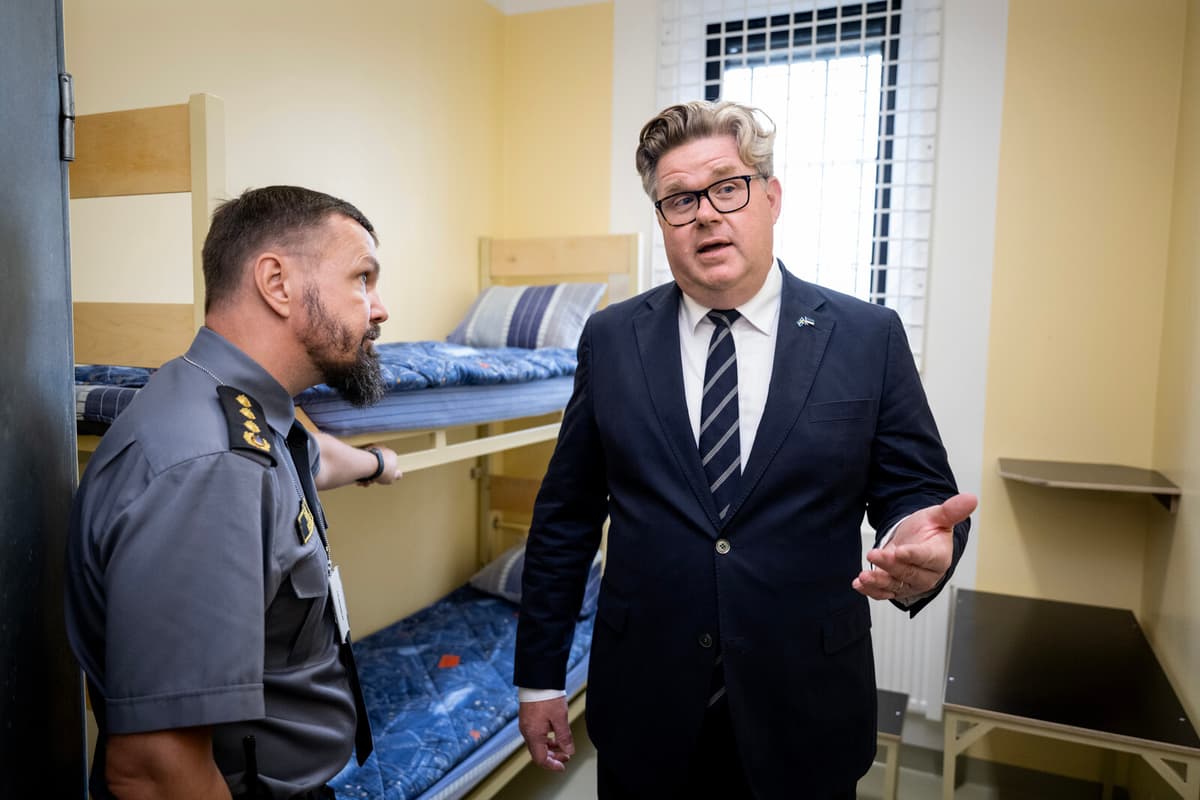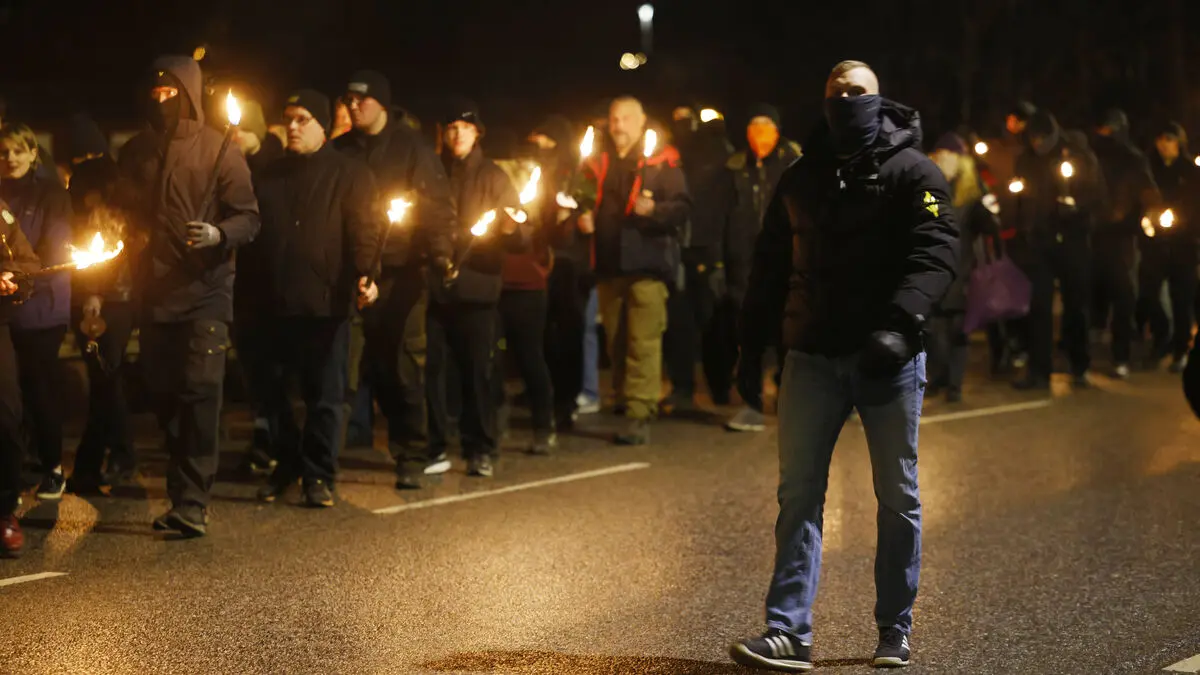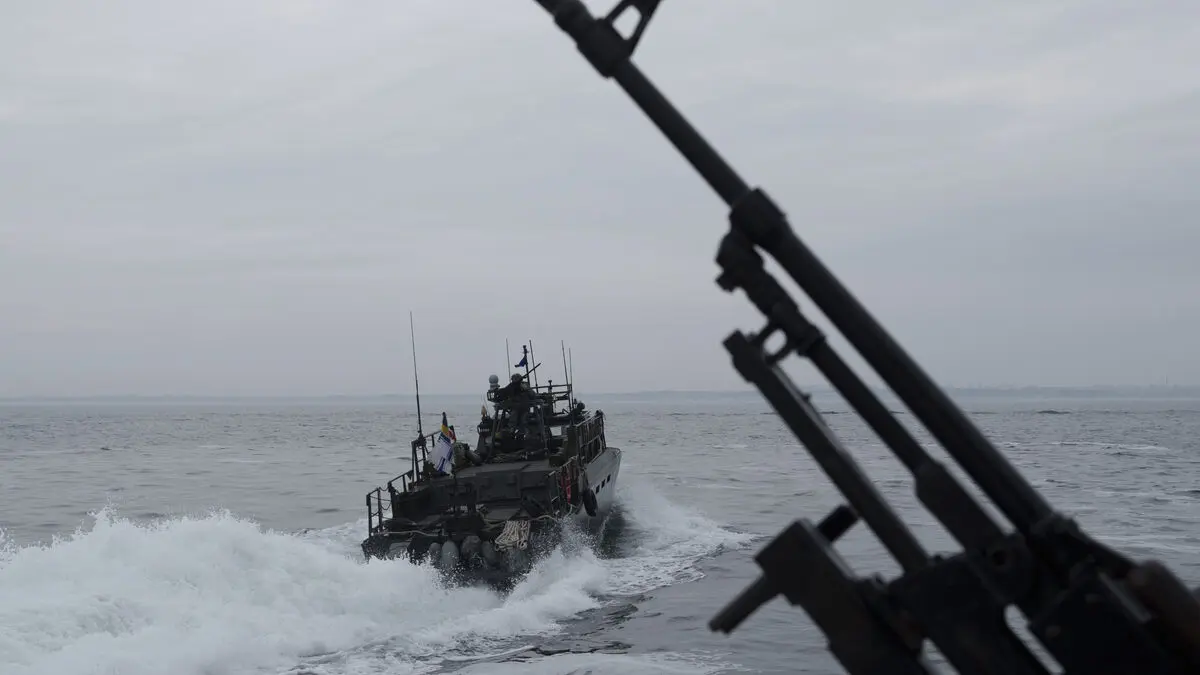Ten square meters, bunk bed and toilet. It's a bit austere, but hardly more austere than in Kumla or Skänninge. What stands out is perhaps the glossy yellow and lilac painted corridors.
Gunnar Strömmer seems to be satisfied anyway. The countries' criminal policies are strikingly similar, he thinks.
Great minds think alike, he says to his hosts.
The tour continues. It's a gray and cloudy morning and in the yard it's quiet - except for a tone-deaf electric guitar that can be heard from a rehearsal room. A few guys on a break gather along the fence with nonchalant curiosity.
The Swedish delegation is led through the handicraft workshop and sports hall and gets to see the tablets for video calls with relatives. And the healthcare facility, which Estonia's Minister of Justice Liisa-Ly Pakosta says holds "Swiss standard".
The cat house where inmates get to take care of stray cats is not included in the tour.
We also have dogs, but they work. The cats don't work, says prison director Kalle Meho with a crooked smile.
Modernized
The prison in Tartu was completed in 2002 and was the cornerstone when Estonia reformed its prisons around the turn of the millennium.
Then the Soviet-era bunker storage was scrapped and replaced with modern methods - rehabilitation, education and preventive work.
Since then, the number of prisoners has decreased steadily. In recent years, unlike Sweden, they have also invested more and more in conditional sentences, electronic surveillance and community service. The number of incarcerated minors is now zero.
Consequently, hundreds of cells are empty. Well-educated and experienced staff may have to be laid off. Jobs and skills are at stake.
Liisa-Ly Pakosta says it's about safety and preparedness. Of course, they have excess capacity now, but who knows what it will look like in the future? Especially with a warlike Putin on the other side of the border.
Russian-speaking
Previously, Estonia has tried to solve the problem by offering prison places to the United Kingdom, but the new Labour government shot down those plans.
But isn't language a problem? Well. A majority of the inmates already have other native languages than Estonian, the minister explains. Most are from the Russian-speaking minority. There are also a couple of Serbian war criminals sent here by the Hague Tribunal.
What possibly causes concern is safety. The Swedish wave of violence has not passed unnoticed. Should they really import Sweden's problems?
My biggest concern is some kind of crime between prisoners, says Liisa-Ly Pakosta.
Sweden has entered into an agreement with Estonia to rent space for up to 600 convicted criminals in the prison in Tartu. The prison has a total of 933 places.
According to the agreement, it concerns men who have turned 18 and who have been convicted of crimes in Sweden, both Swedish and foreign citizens. However, not Estonians.
The prisoners who are transferred to Estonia should not pose a significant security risk, which corresponds to convicted persons who would be placed in a prison with security class 2 in Sweden.
Sweden has undertaken not to send people from organized crime, terrorists or violent extremists.
The cost of a prisoner in Estonia is estimated to be 8,500 euros per month, compared to 11,500 euros in Sweden. To approve the agreement, a parliamentary decision with a three-quarters majority is required. So far, S has not taken a stance.





